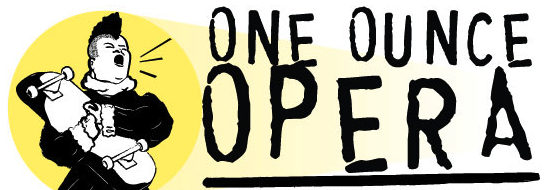Why the Rising Popularity of Soccer in the US is a Good Sign for Opera Fans:
An Examination of Two Imported European Traditions
by Julie Fiore, OOO Founder
I had an unique experience watching the USA v Portugal World Cup match yesterday. I wasn’t at a pub. I wasn’t in a typical bar. The game was hosted by a popular live music club in Downtown Austin called Red 7, transformed into a viewing room with a big screen on the stage. As the match kicked off, the electric crowd resembled one you’d expect at a rock show — tattooed, pierced musicians applauding beside hip young professionals, and college students cheering alongside 30-somethings who work in the service industry.
 It seemed those in attendance were not only fully-engaged in the action, but somewhat knowledgeable about the players, what the outcome would mean for the victor, and the overall rules of the game. And we weren’t alone: almost 25 million others were locked into the game — a record for televised soccer in the US by a long-shot.
It seemed those in attendance were not only fully-engaged in the action, but somewhat knowledgeable about the players, what the outcome would mean for the victor, and the overall rules of the game. And we weren’t alone: almost 25 million others were locked into the game — a record for televised soccer in the US by a long-shot.
All of this for a sport once deemed “boring”, “melodramatic” and “full of softies” by most red-blooded Americans. Or — if nothing else — a silly game so steeped in Old World tradition that us Yanks would always feel disconnected.
So today, I wondered — what could this cultural shift mean for other historically European traditions here at home? Specifically, what could this mean for a resurgence of opera and classical music in the United States?
You can reasonably draw all sorts of parallels between a soccer match and an opera. The drama unfolds slowly, beautifully, accented with moments of intense emotion — usually joy or pain. You become deeply invested in the movement and development of the story and the characters involved. There is a hero. There is an underdog. There is oftentimes internal conflict between the rising talent and a sunsetting star. There are twists and turns and unexpected results, even if you think you know the story.
Consider the amount of risk involved for the players both physically and emotionally, both on the stage and on the pitch. If these highly-trained professionals do not perform as expected — if they badly strike a ball or botch a high note — they could be publicly blasted for having lost their edge. For disappointing fans. For losing the game.
There is a certain amount of musical grace to it all. Ebb and flow, one pass to another, sometimes a chorus moving — no, crescendoing down the field, and sometimes a lone wolf locked in an intense one-on-one battle with their enemy. The offense and the defense work together seamlessly, much like the instrumentalists and the singers.
So could this renaissance-of-sorts for European Football mean that American audiences are learning to be more patient? More “attuned” to thoughtful, developing action instead of requiring constant high-energy assaults-of-the-senses (the barrage of advertisements, never-ending sounds, and big screens which have become a part of every modern NBA game, or the insanely elaborate light shows and heavily-amplified music at pop concerts)? Can our attention be truly held for longer than the commercial intervals now infamously worked into each NFL game? There certainly are no breaks during a soccer match, nor till intermission at an opera.
If Americans are able to appreciate the athleticism and artistry of soccer players, could the same be true for classical singers? Maybe it means we, as the true mutts of the globe, have re-discovered a bit of our world-wide ancestors’ human connection to the “beautiful game” just as we could — and should — to the grandest of all artistic imports: opera.
[twitter style=”horizontal” float=”left”][twitter_follow username=”http://twitter.com/oneounceopera” language=”en”] [fbshare type=”button”][fblike style=”standard” showfaces=”false” width=”450″ verb=”like” font=”arial”] [google_plusone size=”standard” annotation=”none” language=”English (UK)”]

